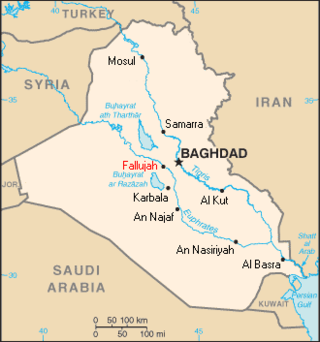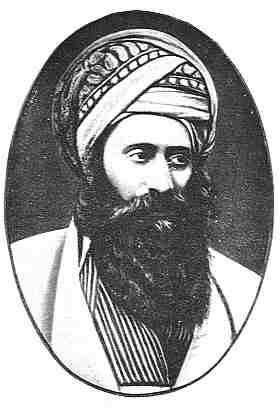Related Research Articles

Hai ben Sherira better known as Hai Gaon, was a medieval Jewish theologian, rabbi and scholar who served as Gaon of the Talmudic academy of Pumbedita during the early 11th century. He was born in 939 and died on March 28, 1038. He received his Talmudic education from his father, Sherira ben Hanina, and in early life acted as his assistant in teaching. In his forty-fourth year he became associated with his father as "av bet din," and with him delivered many joint decisions. According to Sefer HaKabbalah of Rabbi Abraham ben David (Ravad), he was the last of the Geonim.

Yosef Hayim was a leading Baghdadi hakham, authority on halakha, and Master Kabbalist. He is best known as author of the work on halakhaBen Ish Ḥai, a collection of the laws of everyday life interspersed with mystical insights and customs, addressed to the masses and arranged by the weekly Torah portion.

Jacob ben Meir, best known as Rabbeinu Tam, was one of the most renowned Ashkenazi Jewish rabbis and leading French Tosafists, a leading halakhic authority in his generation, and a grandson of Rashi. Known as "Rabbeinu", he acquired the Hebrew suffix "Tam" meaning straightforward; it was originally used in the Book of Genesis to describe his biblical namesake, Jacob.
Simhah ben Samuel of Vitry was a French Talmudist of the 11th and 12th centuries, pupil of Rashi, and the compiler of Machzor Vitry. He lived in Vitry-le-François.
Abraham ben Isaac of Narbonne (c. 1080-85 – 1158) was a Provençal rabbi, also known as Raavad II, and author of the halachic work Ha-Eshkol.
Abraham ben Nathan was a Provençal rabbi and scholar of the 12th-13th centuries.
Isaiah di Trani ben Mali (the Elder) (c. 1180 – c. 1250) (Hebrew: ישעיה בן מאלי הזקן דטראני), better known as the RID, was a prominent Italian Talmudist.
Samuel ben Isaac Ha-Sardi was a Spanish rabbi who flourished in the first half of the 13th century. In his youth he attended the school of Rabbi Nathan ben Meir of Trinquetaille, Provence, and later he returned to Spain, his native country. David Conforte derives the name "Sardi" from the city of Sardinia. Zacuto calls Samuel "Ha-Sefaradi"; so does Heilprin in Seder ha-Dorot, i.216b, 292a in the Warsaw edition of 1883, but in iii.108b of the Warsaw edition of 1882 he designates him "Ha-Sardi."
Isaac ben Joseph of Corbeil was a 13th-century French rabbi and tosafist, best known as the author of Sefer Mitzvot Ḳatan.
Isaac ben Samuel of Acre was a Jewish kabbalist who fled to Spain.
Isaac ben Dorbolo was a rabbi, about 1150.
Isaac ben Judah of Mainz was a Talmudist of the twelfth century; teacher of Solomon ben Isaac (Rashi).
Meir ben Samuel, also known by the Hebrew acronym RaM for Rabbi Meir, was a French rabbi and tosafist, who was born in about 1060 in Ramerupt, and died after 1135. His father was an eminent scholar. Meir received his education in the Talmudical schools of Lorraine, his principal teachers being Isaac ben Asher ha-Levi and Eleazar ben Isaac of Mainz, with whom he later carried on a correspondence.
Isaac ben Baruch Albalia was an Andalusian Jewish mathematician, astronomer, astrologer, and Talmudist.

Ḥayyim ben Shabbethai, commonly known by the acronym Maharhash was a Sephardic rabbi and Talmudist, who is considered to be one of the great sages of Greek Jewry, serving as the Chief Rabbi of Thessaloniki, Greece.
Isaac HaLevi Asir HaTikvah, also known as Isaac of Beilstein, was an important 14th-century Ashkenazi Rabbinic leader.
Elhanan ben Isaac Jaffe of Dampierre also known as Rabbeinu Elhanan was a 12th-century French Tosafist and the son of Isaac ben Samuel. He is mostly known for his numerous commentaries on the Talmudic tractates, Avodah Zarah and Yoma among other notable commentaries. He is also the founder of the Jaffe family.
Ephraim ben Isaac ben Abraham of Regensburg also sometimes called Ben Yakir, was a 12th-century German tosafist and liturgical poet who was known for his keen intellect, his numerous piyyutim and for controversy refusing to recognize any post-Talmudic authority.
Sefer ha-Asuppot is the name of a compilation of medieval German Jewish halakha and minhagim, the manuscript of which is privately held by David H. Feinberg of New York. The work includes a large number of teachings, minhagim, descriptions of popular costumes, halachic rulings, and collected stories from numerous authors, displaying the ordinary life of Rhineland Jews in during the twelfth and thirteenth centuries. The manuscript is endowed with vowel signs almost throughout, which makes it the only non-liturgical and non-Biblical text of its kind, and the vowels follow the Spanish pronunciation. The manuscript is the work of several scribes, containing multiple hands and multiple inks. One scribe was probably named Meir.
Samson ben Samson of Coucy, known as the Count (or Prince) of Coucy, was a French rabbi and Tosafist who flourished at the end of the twelfth and in the first half of the thirteenth century..
References
- 1 2 3 Emanuel, Simha (2008). פסקי ר' מנחם מרקנטי. Shenaton Ha-mishpaṭ Ha-ʻIvri. 25. Hebrew University of Jerusalem: 158–159. LCCN 74647727.
- ↑ Renan, Ernest (1877). "Les rabbins français". In Hauréau, B. (ed.). Histoire littéraire de la France. Vol. XXVII. Paris: Imprimerie nationale. p. 448. LCCN f01002304.
- 1 2 Goldmints, A. Y. (2001). "Foreword". In Hayyim ben Isaac (ed.). Ez Hayyim (in Hebrew). Goldmints, A. Y. (ed.). Jerusalem: Mekhon Yerushalayim. p. 12. LCCN 2004418780.
- 1 2 3 Gross, Heinrich (1897). Gallia Judaica (in French). Paris: L. Cerf. pp. 27–28. ISBN 978-1-02-240123-5. LCCN 51050586.
- ↑ Taylor, Charles (1900). Appendix to Sayings of the Jewish Fathers. University Press. p. 13.
- ↑ Luzzatto, Samuel David; לוצטו, שמואל דוד בן חזקיה (1882). אגרות שד"ל (in Hebrew). דפוס זופניק עט קנאללער. p. 669.
- ↑ Harkavy, Albert (1871). Collection of pamphlets and articles by Albert Harkavy on various topics in Jewish history and Slavic history (in Hebrew). p. 37.
- ↑ Elbogen, J. and A. (1902). Revue des études juives (in French). Ed. Peeters. pp. 99–111, 204–217.